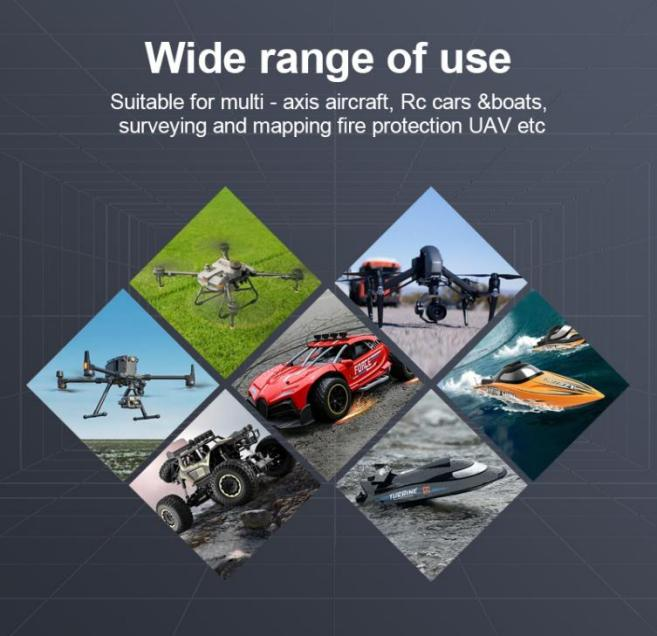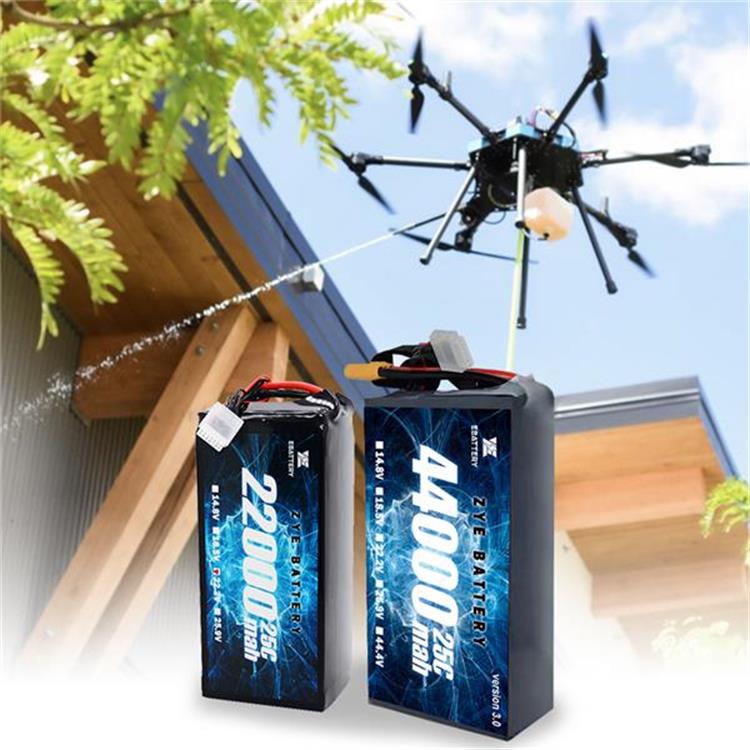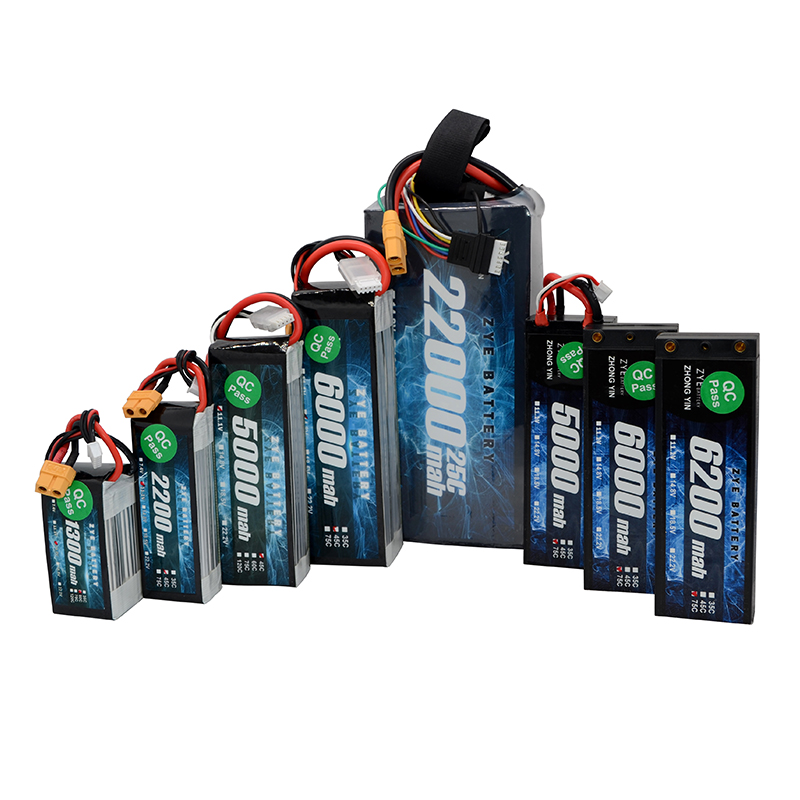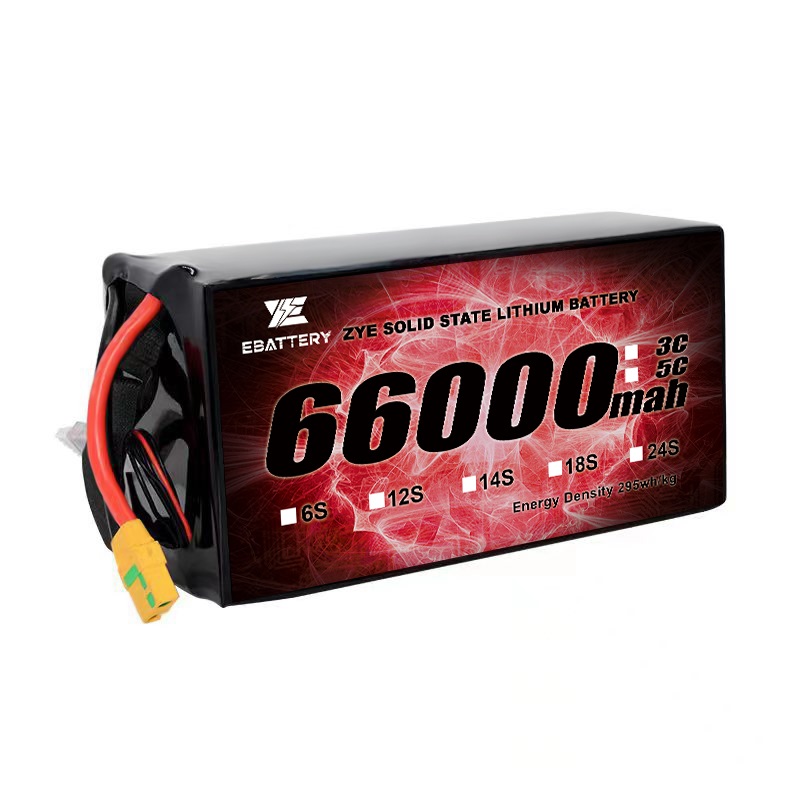How to care drone lipo battery?
2025-11-12
Core Hazards of Overcharging and Over-Discharging
Overcharging Hazards: When charging continues after the battery is fully charged, side reactions occur inside the cells. Gas production causes battery swelling, while electrolyte decomposition reduces battery capacity. In severe cases, excessively high voltage can rupture the cell separator, causing internal short circuits and posing a fire hazard.
Dangers of Over-Discharge: Forcing continued discharge after the battery is depleted (e.g., flying beyond the low-battery warning) causes cell voltage to drop below safe thresholds, damaging electrode structures. Chronic over-discharge induces “deep discharge sleep,” where even subsequent charging results in significant capacity loss or irreversible failure.
How to Charge Drone Batteries: The Correct Method
For drones using lithium polymer batteries, proper charging habits are crucial for battery health and longevity. Expert tips will guide you in charging drone batteries correctly.
Charging Safety
Use Dedicated Chargers: Always charge with the charger specifically designed for your drone's battery. Avoid using incompatible chargers that may cause overcharging or over-discharging.
Charging Environment: Ensure the charging area is dry and well-ventilated, avoiding direct sunlight and high temperatures. Never charge in enclosed spaces or vehicles to prevent fire or explosion.
Supervise Charging: Always have someone present during charging to address any potential abnormalities.
Inspect Battery Condition: Before charging, check the battery for integrity. Avoid using batteries with damage, leakage, deformation, or other issues.
Inspect battery condition before charging; discontinue use immediately if issues are found.
Preventing Overcharging: Controlling Critical Details During Charging
If the battery exhibits swelling, damaged casing, or oxidized connectors, charging risks may occur even with proper procedures. Before charging, carefully inspect the battery's appearance: press the surface—it should not dent or bulge; check connectors for rust or deformation. Only connect the charger if no abnormalities are present. If issues are detected, stop using the battery immediately and contact the manufacturer's after-sales service. Do not attempt to charge it.

Before selecting a drone battery, first understand the motor's critical operating parameters. Battery compatibility ultimately depends on the motor's performance requirements:
1. Motor Maximum Current: The core metric for evaluating battery discharge capability
Motors generate high currents during full-load operation (e.g., takeoff, rapid acceleration, load-bearing flight). This “maximum current” is typically labeled as “maximum continuous current” or “peak current” in motor specifications and can also be determined through actual testing. The selected battery must reliably deliver this current throughout the entire flight while maintaining a safety margin. It is recommended that the battery's continuous discharge capacity reach 1.2 to 1.5 times the motor's maximum current.
2. Motor Voltage Range: Determines Battery Cell Count and System Voltage Level
The motor's rated voltage dictates the appropriate battery voltage level, commonly referred to as “S-cell batteries.” The battery's nominal voltage must match the motor's rated voltage or fall within its permissible voltage range. Excessive voltage may burn out the motor, while insufficient voltage leads to inadequate power or failure to start properly.
3. Motor Power and Flight Duration Requirements: Key Reference for Battery Capacity
Motor power is determined by both voltage and current. Higher power consumes more energy, consequently requiring greater battery capacity. When selecting battery capacity, consider not only meeting the motor's power demands but also the actual flight duration requirements of the application scenario.
4. Battery Weight vs. Motor Thrust Matching
Battery weight constitutes a significant portion of the drone's total weight. Ensure the total motor thrust (calculate total thrust for multi-motor drones) is ≥ 1.5–2 times the drone's total weight (including battery). (Adjust based on flight scenarios; racing drones require higher thrust ratios.) Failure to meet this ratio may result in insufficient power, compromising maneuverability and endurance.

If you're looking for high-quality LiPo batteries or have more questions about battery care and maintenance, don't hesitate to reach out to our team of experts. We're here to help you get the most out of your battery-powered devices.Contact us today at coco@zyepower.com.
























































